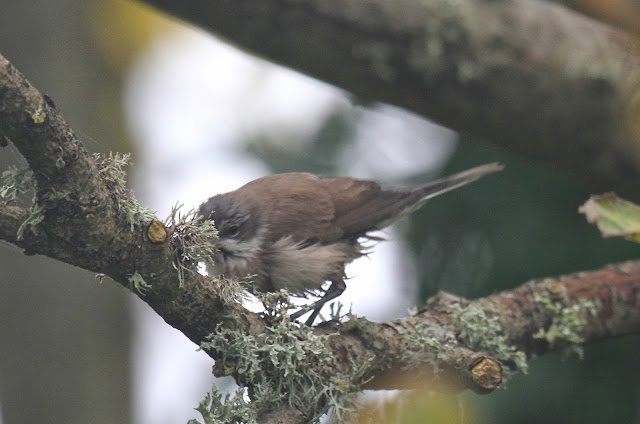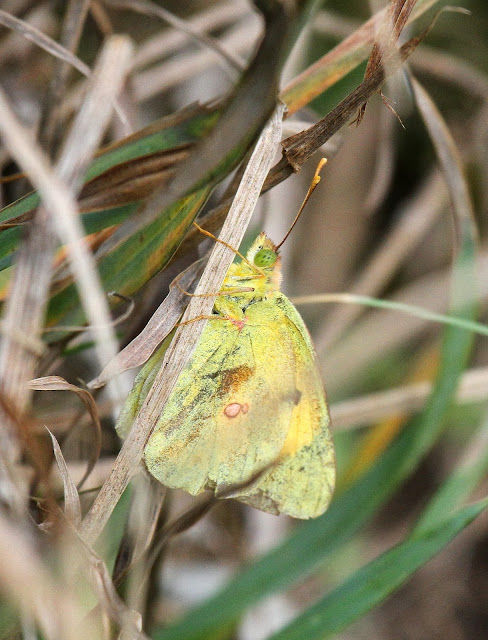Potential rarities on the Lizard never seem to be entirely
straightforward as those of you who remember the Green / Greenish debacle or
the Brown Shrike controversy will no doubt be aware. I suppose it should have
come as no surprise to me, therefore, that this wheatear would prove controversial.
Although many seem ready to dismiss it
out of hand, I think the whole case requires a bit more scrutiny. I for one, still
think it was a Black-eared Wheatear.
The find
I’ll start with a brief account of my involvement: about 4pm
yesterday, I got a call from Steve Votier, with whom I had been out birding
with early to say he was looking at Black-eared Wheatear. I understand he hadn’t
reached this decision immediately – only after 2 hours of watching it. When I
arrived and saw it, I must admit it didn’t fit my mental image of the previous
bird I saw on Scillies in 2010. The crown and mantle tone didn't seem right. It was much more subtle bird, but several
features made me pretty certain it was one, with the caveat that I haven’t got
a great deal of field experience of them. When I saw the photos however, I did
have doubts, and Steve and I spent most of today trying to relocate it to get
better photos, unfortunately to no avail.
Anyway, here’s a few more photos of it, some courtesy of Tony Blunden
and some I took, together with a few thoughts:
First off, the tail pattern: on the photos posted last night on
CWBPS , it doesn’t look right. However – in the field this was one
of the more obvious pro-features and I think I can explain what’s going on. If
you look at how many retrices are visible, you can see about 4 either side of
the dark central tail band. However there should be 5 visible on a
fully spread tail (see here). The tail isn’t fully spread, giving the terminal
tail band a flat appearance. Compare the right and left sides of tail on this bird, the same as in previous link for the effect this can have on the terminal tail band. In the field it was quite obvious that the
white was more extensive on T2 & 3 than on T1.
Second off, the axillaries. I saw these several times, and they were dark,
almost jet black. The photo below courtesy of Tony, isn’t the sharpest, but I’d
struggle how it could produce this appearance if they weren’t dark. I’d welcome
thoughts on how much of a clincher this is. I’m given to understand it is.
Third off, the size and structure of this bird was noticeably
different. Noticeably smaller and leaner, and somewhat longer tailed. You can
see that quite well on the photo below. It stood out like a sore thumb among
the 3-4 Northern Wheatears present for this reason.
Fourthly, and actually the most noticeable feature of the
bird was the extremely white belly and under tail coverts, which contrasted sharply with the more peachy toned
breast. It stood out like a Whinchat among Stonechats. I’ve never seen anything
like that on a Northern Wheatear, although I have to admit I don’t know how
important that feature is. None of the photos really do it justice, but the one
below gives you a bit of an idea, although in life the contrast was more
marked.
Fifthly, the extent of pale fringing on the tertials, but in
contrast to Northern’s I’m used to seeing, on the lesser and median coverts. It’s
really narrow giving the coverts and tertials a very dark and contrasting (with
mantle) appearance, which doesn’t fit with what I’d expect on a 1st
winter Northern Wheatear. Again, not sure how important this is, but it was
really striking (see photo).
Sixthly – the supercillium was most striking in front of the
eye, but one might expect that on a northern, this would be more striking
behind the eye. That said, it does seem quite pale and prominent for a
Black-eared.
The general tones to the upperparts were a bit pale and grey for
my liking and extension of primaries relative to the tail long for my liking, but the former does seem to be quite a variable feature. The latter deserves a bit more scrutiny.
Overall, I’m aware of the danger of trying to make it fit
Black-eared, rather than ruling out Northern, but this really was a striking
bird in the field and just didn't fit my mental image of any Northern I've seen.
That said, I’m not at all closed minded about this, and would
rather lose face than let it slip though if it wasn’t so welcome thoughts.
Steve will probably have something more intelligent to say about it in due
course.























































